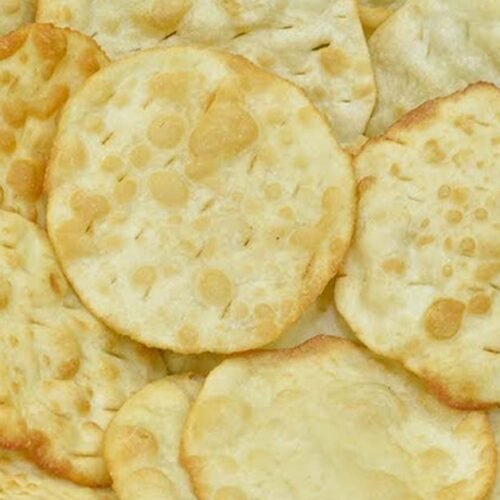
Crispy Kadakani Recipe: Perfect Maharashtrian Navratri Dish
Learn how to make crispy and delicious Kadakani at home with this easy-to-follow recipe. A traditional Maharashtrian sweet snack perfect for any occasion!
Ingredients
- 250 g all-purpose flour maida
- 50 g semolina rava
- 125 g sugar
- 3 tablespoons clarified butter (ghee) or oil
- A pinch of salt
- Water or milk for kneading
Instructions
- Prepare the Flour and Semolina: Sieve the all-purpose flour to remove any impurities. Grind the semolina and sugar separately into a fine powder using a mixer grinder.
- Mix the Dry Ingredients: In a large bowl, combine the sieved all-purpose flour, finely ground semolina, powdered sugar, and a pinch of salt. Mix well.
- Add Ghee: Heat the clarified butter (ghee) until it is very hot. Pour the hot ghee over the flour mixture and mix it thoroughly using a spoon to prevent burning your hands. Ensure the ghee is evenly distributed throughout the flour.
- Knead the Dough: Gradually add water or milk to the mixture, kneading it into a firm, tight dough. Do not add too much liquid at once. The dough should be stiffer than chapati dough.
- Rest the Dough: Cover the dough and let it rest for about 10 minutes. This allows the semolina to absorb the moisture and makes the dough easier to work with.
- Roll the Kadakani: Take a small portion of the dough and roll it out into a thin circle, just like a chapati. Make sure the sheet is rolled as thinly as possible for a crispy texture. You should be able to see the surface beneath the dough.
- Pierce the Dough: Using a knife or fork, gently pierce the rolled-out dough all over. This prevents it from puffing up like a puri while frying and ensures it remains crispy.
- Fry the Kadakani: Heat oil in a deep pan. Once the oil is hot, carefully slide the rolled and pierced Kadakani into the oil. Fry on a medium flame.
- Monitor the Colour: Fry until the Kadakani turns a light golden-brown colour. Do not over-fry, as it will continue to darken after you remove it from the oil.
- Cool and Store: Remove the Kadakani from the oil and place it on a wire rack or paper towel to cool completely. Once cooled, store them in an airtight container.